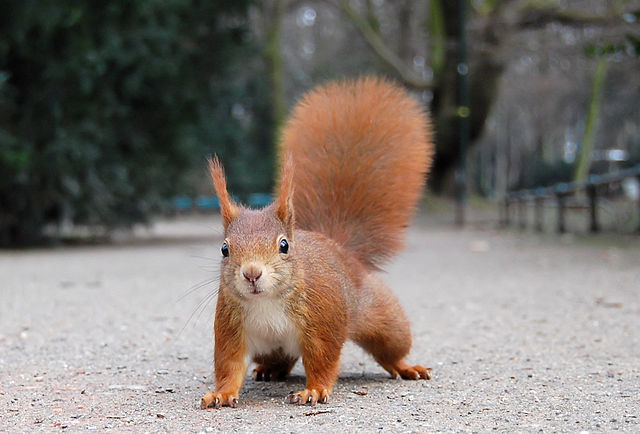Stand up for the rights of rats
- Complaining about the Mainland - 17th August, 2024
- New island designation – is it just greenwash? - 26th April, 2024
- Police and Crime Commissioners – a solution or a problem? - 21st April, 2024
The National Trust for Scotland has been poisoning rats on the Scottish island of Canna in the name of bird conservation. Ten thousand of the furry little darlings have already been eliminated, and another thousand or so remain for the treatment.

This is interesting to the Ranger, another Island dweller, for a number of reasons. Non-indigenous species on an island can be problematic – as we on the Isle of Wight know with respect to grey squirrels. Dealing with them can be even more problematic. Let’s take a short voyage into the recent past of island wildlife culls. The Ranger was amazed and concerned by the public response to the Outer Hebrides hedgehog cull in 2002, 2003 and since. Whilst this was partly fuelled by a mismanaged SNH publicity exercise, the views expressed went far beyond any of that. This response included describing Scottish Natural Heritage as “unfeeling, uncaring scum” or “SNH Nazi CONservationists“; and their policy as “scientifically flawed and unethical” or even “pseudo science at its worst”. The issue became national news and celebrities including Sting, Sir Paul McCartney, Twiggy, Joanna Lumley, Sir Tim Rice and Watership Down author Richard Adams all offered the hedgehogs homes in 2003 – although the Ranger doesn’t know whether such kind offers were ever taken up. Overall, an extraordinary response to the plight of the few hundred hedgehogs involved in this case – and one which showed the public’s overwhelming concern for the welfare of these popular creatures. Flash forward – to the rats. The story has been public since at least August 2005 but no clamour can be heard. The Ranger is concerned that perhaps the animal lovers who stepped forward to help the hedgehogs have not heard of the pitiful plight of the poisoned rats. Step forward, Sir Paul! How many Scottish brown rats can your bountiful estate support? Surely a few more ratties in distress could squeeze in? Joanna Lumley? Yes, you there! Will you be available to pose for photos with the rat crates before unloading? And where is the Rat Rehoming Society, appealing for donations to save the little brown sweethearts? Could it be that the huge debate about the moral and legal rights of hedgehogs in the last few summers was not fuelled by a dispassionate concern for justice for all animals – but by a simple love of hedgehogs? It seems impossible to conclude otherwise. The Ranger has no problem with that – it’s very good that people love wild animals so, and care for them with such dedication. Most cull objectors would claim no more than this – but some do. They make a mistake when they allow that affection and care to go one step further. Other people should not dictate which animals they care for, nor should others criticise them for making such efforts on behalf of their chosen beloved species, whatever it might be. But in return, animal enthusiasts should allow others the same freedom – if others want to manage animals in certain ways, constructive criticism of the methodology can be appropriate, but emotional appeals and personal attacks – or comparisons with Nazi Germany – are not.



Good question. Generally, I think such things are not an effective use of resources in themselves; but often they draw attention and gain support for other, more worthy works. Often, the species being reintroduced has been lost from the area because of habitat degradation of some sort. Only if that habitat has been restored and the reason for its degradation removed will reintroduction be viable. In the case of the red kite, this seems to be the case (altogether DDT and gamekeepers were as much to blame as habitat loss) and, to be fair, it seems to have been a successful reintroduction.
The dark side of reintroduction is that people get the idea that reintroduction is a good idea, and they have a go themselves. Conservation is not like gardening – if you want a species to thrive, just buying some and planting them/letting them go is not enough. It is very easy to obtain some species, especially wild flowers and butterflies, and there are many, sometimes informal, attempts to reintroduce on a small local scale which can lead to problems. Often this is not so much a reintroduction as just translocation, for various purposes.
The JNCC said in their 1996 Review of information, policy and legislation on species translocation:
Just out of curiosity, what are your opinions on re-introductions, e.g. Red Kite, Sea Eagle, Large Blue etc.